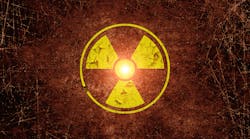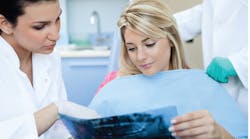Bananas versus dental radiographs: Which has more radiation?
Listen to the article on our podcast!
The most frequent pushback dental hygienists get from patients is about dental x-rays. Many people are concerned about the radiation emitted from the checkup bite-wing x-rays, panoramics, or full series. Now we have a straightforward way to help patients understand and relate to just how much radiation there is in dental x-rays compared to their everyday encounters with radiation.
Radiation comes from many sources
People are exposed to radiation every day and they don’t even think about it—from the sun, flying in an airplane, talking on our cellphones, and even in some of the foods we eat. Amazingly, bananas are a naturally occurring radioactive food due to their elevated levels of potassium. A fraction of potassium is radioactive, and radiation is measured in millisieverts. One banana is equivalent to 0.001 millisieverts of radiation.
One would still have to ingest an exceptionally high number of bananas (more than 100) to receive the same amount of radiation encountered in the environment daily.1 Today, when receiving a set of four bite-wing x-rays taken once a year to check for cavities between the posterior teeth, the total amount of radiation is 0.005 millisieverts.2
For comparison, the daily natural radiation exposure from the environment is 0.008 millisieverts.3 A seven-hour plane ride exposes someone to 0.02 millisieverts, or four times the amount in bitewing x-rays. That’s something people can think about when planning their next trip.
Where dental x-rays fit in
The Centers for Disease Control and Prevention (CDC) concluded that dental x-rays use a minimal amount of radiation, and expose only the area with a health concern.4 The x-ray cone focuses only on the area we’re evaluating and does not touch any other body part. For a while it was suggested we wear lead aprons when taking dental x-rays to prevent scattering radiation to surrounding tissue.
After further research, experts found dental radiographs to be so specific to one area that the ADA issued a statement that said the use of lead aprons and thyroid collars during dental x-rays are no longer needed, regardless of age or pregnancy.5
This new recommendation is due to the advance in modern technology and restricted beam size. Most, if not all dental offices in America now use digital x-rays instead of the conventional film technique, resulting in significantly less radiation exposure, less error, and fewer images needing to be taken.
There’s no way for the dentist to accurately diagnose a patient without x-rays. It is through the x-ray images that we can find root fractures, oral cancer, decay, and infection. Not all these findings are discoverable clinically and could go undetected if a patient continually denies having x-rays taken.
It is the goal of dentists and hygienists to be proactive in their care of patients, to help prevent pain and disease. We would not be doing our jobs if we neglected the importance of radiographs. What should have been a minor filling can turn into a painful root canal or life-threatening infection if it’s not detected through the proper imaging.
References
1. Natural radioactivity in food. Environmental Protection Agency. May 21, 2024. www.epa.gov/radtown/natural-radioactivity-food
2. Osgur J. How much radiation do you get from dental x-rays? Toronto Smile Design. August 22, 2021. https://www.torontosmiledesign.ca/cosmetic-dentist-in-toronto/how-much-radiation-do-you-get-from-dental-x-rays
3. Comparison of medical, dental, and natural radiation levels. Ora Surgery. Accessed September 15, 2024. www.orasurgery.com/comparison-of-medical-dental-and-natural-radiation-levels/
4. Facts about x-rays. Centers for Disease Control and Prevention. February 20, 2024. www.cdc.gov/radiation-health/data-research/facts-stats/x-rays.html?CDC_AAref_Val=https://www.cdc.gov/nceh/radiation/x-rays.html
5. ADA releases updated recommendations to enhance radiography safety in dentistry. American Dental Association. February 1, 2024. www.ada.org/about/press-releases/ada-releases-updated-recommendations-to-enhance-radiography-safety-in-dentistry
About the Author
Lauren Godshall, RDH
Lauren Godshall, RDH, graduated from dental hygiene school in 2020 as part of Camden County College’s Covid graduating class. She currently works full time in Sewell, New Jersey, for a family practice office. She lives in Sewell with her husband, Christian, and their goldendoodle. If she’s not into a house project, she spends her time running, following the Phillies, and enjoying time with family and friends.


